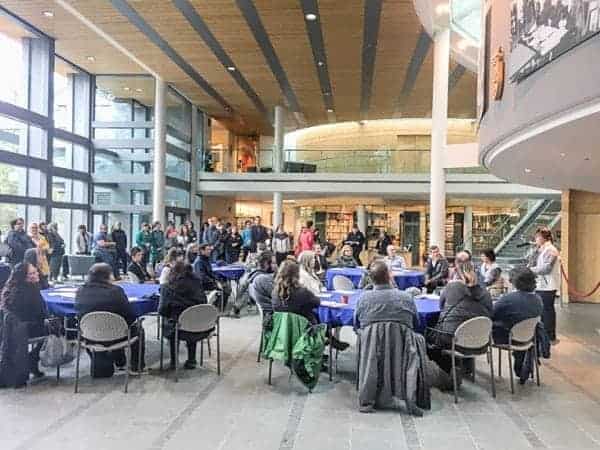Every resident of the Northwest Territories has the right to equal access to public services, yet many services are not easily accessible in the nine official Indigenous languages.
In an attempt to remedy this, the government of Northwest Territories has developed a plan to preserve and promote Indigenous languages.

The NWT Indigenous Languages Action plan, released Friday, has two primary goals: language revitalization, and better access to services in all 11 of the NWTs official languages.
“We're just leaving that dark century, the 20th century, where many, many Indigenous people were punished, were ashamed to speak their indigenous languages,” said Dr. Angela James, director of Indigenous languages and education at the department of Education, Culture and Employment.
“We're paddling up river back to the place where our elders, our adult speakers, our families and communities understand how important language is.”
The Truth and Reconciliation Commission reported that at residential schools, children were prohibited from speaking their languages and punished – sometimes violently – if they did.
The action plan is a step toward restitution for historical Canadian policies aimed at eliminating Indigenous languages and culture.
James called the action plan a “milestone” document because it combines all of the government's language access and revitalization goals into one succinct strategy.
Right now, the provision of public services in Indigenous languages is held back by a lack of funding, said Tammy Steinwand-Deschambeault, a member of both the GNWT's Aboriginal Languages Revitalization Board and the Official Languages Board.
“On any given day, how many different interpreters are at the hospital? You might have maybe three or four, but in the in the Northwest Territories we have 11 official languages,” said Steinwand-Deshcambeault in an interview following the event.
“You're not always going to have 11 interpreters at every place, like at the courts and the hospital.”
The action plan recommends ways to build the territory's capacity to deliver health, justice, education and social services in Indigenous languages.
It calls on the GNWT to offer interpretation and translation training that is specific to each the health, social services and justice sectors, make language classes available to GNWT employees under the banner of professional development, and to support language programs in schools.
Caroline Cochrane, the minister of Education, Culture and Employment, said the government is already working at incorporating Indigenous language lessons into the NWT curriculum so that all children, not just Indigenous children, learn to speak Indigenous languages.
Specifically, she said, in the future, students will have the option studying either French or an Indigenous language.
Cochrane said $4.8 million will be distributed among Indigenous governments so they are able to develop their own language revitalization plans.
She said currently more than 40 speakers are being trained in how to teach their language.
“Language is culture,” Cohcrane told Yellowknifer, adding that Indigenous culture manifests itself through oral storytelling.
“Our elders would sit with us and tell stories and that's how we shared history, that's how we shared our cultural practices,” she said.
If the language is lost, Cochrane continued, how can the culture be preserved?
The number of fluent Indigenous language speakers is declining, particularly in the younger generations, and this is a major concern for Steinwand-Deschambeault.
Some communities have only a few people who can read and write in their language, she said.
Steinwand-Deschambeault said programs in which parents and children learn their language together, as well as on-the-land culture camps with a language component, can help promote fluency.
“We're at a point now where young people are starting to say, 'I want to know my language, I want to learn, help me to learn,'” she said.
Steinwand-Deschambeault pointed out that when elders are moved out of their family home and into seniors residences, the language and cultural teachings go with them.
“It's important that (young people) find a family member, grandparents or another community member who's really willing to sit and tell stories and talk with them, all in the language,” she said.
The action plan publication was celebrated with a feeding the fire ceremony at the legislative assembly, followed by tea and bannock.
In a speech to the crowd gathered in the building's Great Hall, Steinwand-Deschambeault said government policies only go so far to preserve and promote Indigenous languages. To achieve true language revitalization, individual people have to put in work.
“It is up to each of us, we each need to be that change that we want to see,” Steinwand-Deschambeault, a Tlicho speaker, told a crowd gathered at the Legislative Assembly Building on Friday.
“If we see that languages are struggling and are weak, we have to work at it ourselves.”